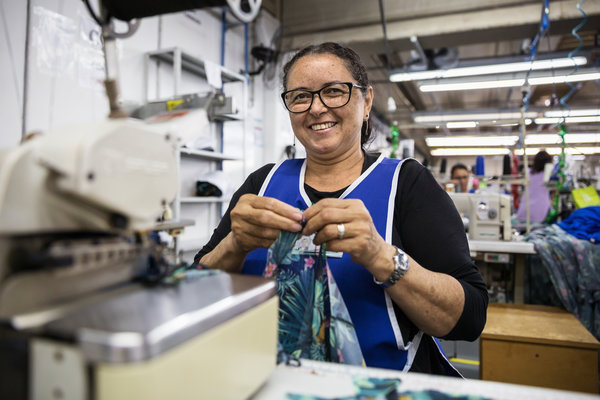Making Fashion a Force for Good
Last week, I travelled to Panipat, India as part of a visit to one of our partners, GoodWeave. A town of half a million souls, Panipat is, unusually, the destination for many of our unwanted clothes. Women sort through piles of “recycled” clothing, pulling out what can be reworn and dissembling what can be salvaged. Watching this process (through this captivating documentary, Unravel) can be sobering, reminding us of the enormous waste the global fashion industry generates.
And as I walked through Panipat’s dusty and narrow alleys, peeking into the odd building where piles of denim scraps awaited their fate, I reflected on what we – at C&A Foundation – have been working tirelessly to do. Almost five years ago, we relaunched the foundation with a bold, and some might say, overly ambitious goal: to make fashion a force for good. But what does this actually mean? How exactly can a $2.5 trillion industry, that reaches deep into some of the world’s poorest countries, positively impact the millions of families who depend on it?
We were determined to find out.
For us, helping to make fashion a force for good is not about supporting incremental change. “Being good” is not about - in the inspiring words of my eco-hero, Bill McDonough - “being less bad.” Moderate improvements in working conditions or environmental efficiencies are important, but to be frank, not enough.

Rather, making fashion a force for good is about changing the underlying business model of this complex, global industry from one that is extractive to one that is regenerative.
It’s about creating accountability that then ensures dignified and decent work for farmers and factory workers alike.
It’s about putting migrant kids back into school (rather than picking cotton) so they can have a brighter future.
It’s about providing opportunities for women workers to stand up, be heard, and lead.
It’s about empowering policy makers around the world to put in place both the carrots and the sticks to motivate better business practices.
It’s about enabling each of us – as consumers – to be able to make environmentally-friendly and ethical fashion choices using readily available data.
And it’s about using the market power of this industry to tackle one of the most challenging and global issues of our time: our heating planet. Last year’s UN Intergovernmental Panel on Climate Change (IPCC) report gave us only 12 years to act. Given that the fashion industry accounts for 10% of global greenhouse gas emissions, we have no time to lose.
We, as a philanthropic foundation, have an important role to play. We are able to take risks, make big bets, think long-term. We can use our resources to encourage industry players like brands, retailers, manufacturers, to challenge their business models. We can test new ideas, like Fashion for Good’s collaborative innovation platform, or new models, like worker-led transparency. We can bring others together to collaborate or strengthen those important platforms which support, nudge, and cajole the industry to embrace sustainability. But we are only one of many, well-intentioned organisations committed to a better fashion future.
If we are truly going to make fashion a force for good, we need to do it together.
We believe that fashion has the power to improve the lives of the women and men behind our clothes and to enhance the lives of everyone the industry touches. A fair and sustainable future for the industry depends on the action we take. As a part of a new series “Fashion as a Force for Good: disrupting the status quo” you will hear from some of our partners and how their organisations are working to transform the fashion industry into a force for good. Our Executive Director, Leslie Johnston kicks-off the series with the foundation's perspective on Making Fashion a Force for Good.

